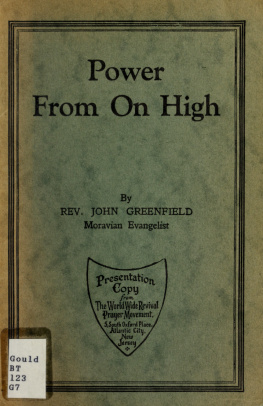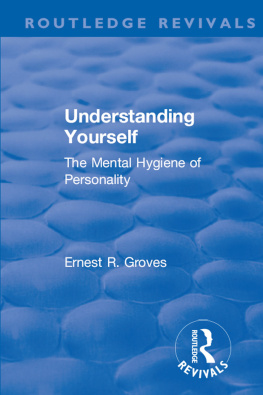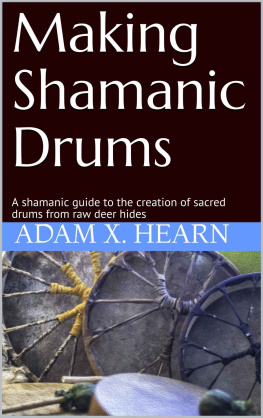Routledge Revivals
DRESS, DRINKS, AND DRUMS
Dress, Drinks, and Drums
Further Studies of Savages and Sex
By
Ernest Crawle Y
Edited By
Theodore Besterman
First published in 1931 by Methuen & Co. Ltd.
This edition first published in 2018 by Routledge
2 Park Square, Milton Park, Abingdon, Oxon, OX14 4RN
and by Routledge
711 Third Avenue, New York, NY 10017
Routledge is an imprint of the Taylor & Francis Group, an informa business
1931 Taylor & Francis
All rights reserved. No part of this book may be reprinted or reproduced or utilised in any form or by any electronic, mechanical, or other means, now known or hereafter invented, including photocopying and recording, or in any information storage or retrieval system, without permission in writing from the publishers.
Publishers Note
The publisher has gone to great lengths to ensure the quality of this reprint but points out that some imperfections in the original copies may be apparent.
Disclaimer
The publisher has made every effort to trace copyright holders and welcomes correspondence from those they have been unable to contact.
A Library of Congress record exists under ISBN: 31029171
ISBN 13: 978-1-138-50602-2 (hbk)
ISBN 13: 978-1-138-56600-2 (pbk)
ISBN 13: 978-1-315-12327-1 (ebk)
DRESS, DRINKS, AND DRUMS
OTHER WORKS BY ERNEST CRAWLEY
THE TRES OF LIFE: a Study of Religion
THE IDEA OF THE SOUL
THE MYSTIC ROSE: a Study of Primitive Marriage and of Primitive Thought in its Bearing on Marriage. 2nd edition, revised and enlarged by Theodore BESTERMAN. 2 vols.
STUDIES OF SAVAGES AND SEX. Edited by THEODORE BESTERMAN
OTHER WORKS BY THEODORE BESTERMAN
CRYSTAL-GAZING: a Study in the History, Distribution, Theory and Practice of Scrying
THE D DIVINIng-Rod: an Experimental and Psychological Investigation (with Sir William Barrett , F.R.S .)
IN THE WAY OF HEAVEN
MIND AND BODY: a Criticism of Psychophysical Parallelism. By Professor HANS DRIESCH. Authorised Translation by Theodore Besterman.
SOME MODERN MEDIUMS
DRESS, DRINKS, AND DRUMS
FURTHER STUDIES OF SAVAGES AND SEX
BY
ERNEST CRAWLEY
EDITED BY
THEODORE BESTERMAN
First Published in 1931
PRINTED IN GREAT BRITAIN
TO
HAVELOCK ELLIS
WHEN The Mystic Rose was first put out in 1902, a single modest volume, Mr. Crawley was rewarded by unstinted praise from such men as Dr. Havelock Ellis and M. Salomon Reinach, Dr. E. S. Hartland and M. van Gennep, Dr. W. H. R. Rivers and Professor Westermarck, the last of whom has generously repeated in a recent letter that he considers The Mystic Rose "to be one of the most important books on Social Anthropology ever published." But there Mr. Crawley's reward stopped short: his profound insight into the savage mind and his forthright treatment of the psychological problems of sexual anthropology were too far in advance of his time. The Mystic Rose failedfailed, that is, to sell; Messrs. Macmillan remaindered it to a bookseller, who very slowly sold off his stock of copies at a few shillings apiece.
But with the passing of time the more recent doctrines in social anthropology, such as those of Professor Malinowski (who has written that The Mystic Rose is "a work which appears to me among the best and most important of the psychological studies of primitive custom "), caused students to return to Mr. Crawley's writings with a new perception of their great importance, and by the time of his premature and lamented death in 1924 The Mystic Rose was only occasionally obtainable and only at a very high price.
It was a source of the greatest possible gratification to me when I was asked to edit the book for a new edition, but I little expected that after a quarter of a century it would create so large a demand as it has done. Still less did I anticipate that I should be enabled to edit two volumes of Mr. Crawley's scattered writings on kindred subjects.
In Studies of Savages and Sex I brought together nine shorter essays. In the present volume are assembled three longer studies, the first of which, indeed, is long and important enough to have made a volume in itself. None of these twelve papers has been previously printed in book-form, and there still remains enough first-rate material to make a third and final volume of essays, should the publishers feel that there is a sufficient demand for it.
As with Studies of Savages and Sex I have allowed myself somewhat greater freedom in editing than with The Mystic Rose. I have silently made a good many verbal alterations, omitted and added a number of passages, and generally made slight adaptations to fit the essays for book-form. Opinions and theories have of course been left intact. The references to authorities have been verified and reduced to order, and I am also responsible for the Index.
I have again to thank the family of the late Dr. James Hastings and Messrs. T. & T. Clark for permission to reprint from The Encyclopedia of Religion and Ethics.
TH. B.
LONDON
ITS ORIGINS, FORMS, AND PYSCHOLOGY, WITH SPECIAL EMPHASIS ON THE SEXUAL PSYCHOLOGY
DRESS, DRINKS, AND DRUMS
AN analysis of the relations of man's clothing with his development in social evolution will naturally be chiefly concerned with psychological categories. When once instituted, for whatever reasons or by whatever process, dress became a source of psychical reactions, often complex, to a greater extent (owing to its more intimate connexion with personality) than any other material product of intelligence. Some outline of the historical development of dress will be suggested, rather than drawn, as a guide to the main inquiry. For formal, chronological, or regional histories of dress, the reader must look elsewhere.1
The practical, or, if one may use the term, the biological uses and meaning of dress, are simple enough and agreed upon. These form the first state of the material to be employed by the social consciousness. Its secondary states are a subject in themselves.
1 Among such works most warmly to be recommended are Max von Boehn, Die Mode: Menscbcn und Moden vom Untergang der alten Welt bis zum Beginn des zwanzigsten Jabrbunderts (Munich 1907-1925, 8 vols.), and the splendid series of illustrations in Paul Louis de Giafferi, The History of the Feminine Costume of the World from the year 531 B.C. to our Century (New York, Paris [1927]). Among lesser works of a general kind in English mav be mentioned Mary Evans, Costume Throughout tbe Ages (Philadelphia 1930), and Khler2 von Sichart, A History of Costume (London 1928). Curiously enough, the bibliography of drew and costume has not yet been attempted.
The primary significance of dress becomes a difficult question as soon as we pass from the institution in being to its earliest stages and origin. For speculation alone is possible when dealing with the genesis of dress. Its conclusions will be probable in proportion as they satisfactorily bridge the gulf between the natural and the artificial stages of human evolution. The information supplied by those of the latter that are presumably nearest to the natural state, to Protanthropus, is not in itself a key to the origin of clothing, but, on the other hand, the mere analogy of animal-life is still less helpful. An animal has a natural covering more efficient for the two uses of protection against the environment and of ornamentation as a sexual stimulus. An animal may become adapted to a change, for instance to an Arctic climate, by growing a thick fur which is white. It may be supposed that, to meet a similar change, man invents the use of artificial coverings. But this old argument is contradicted by all the facts.












